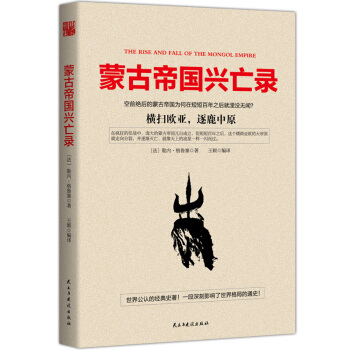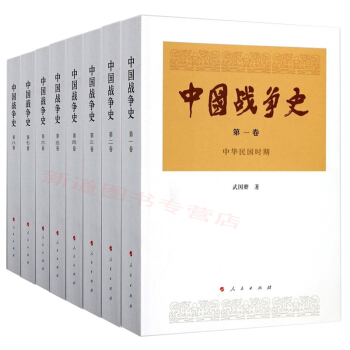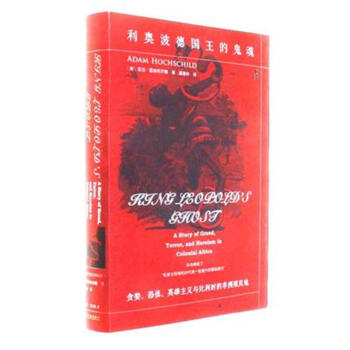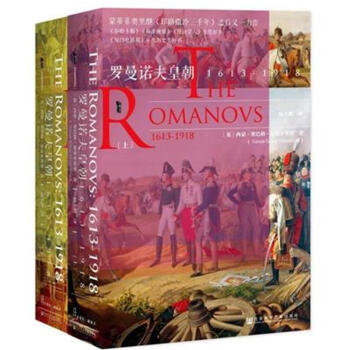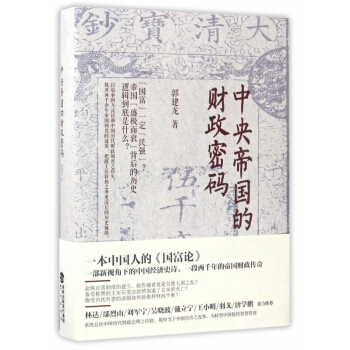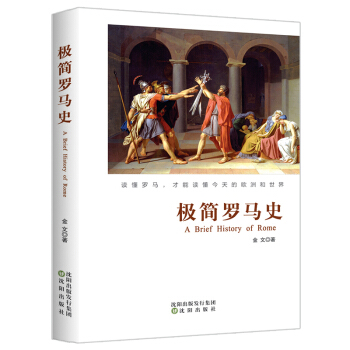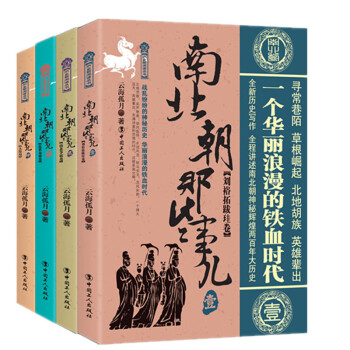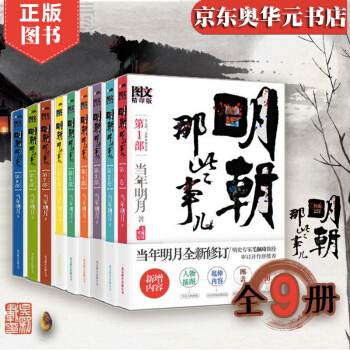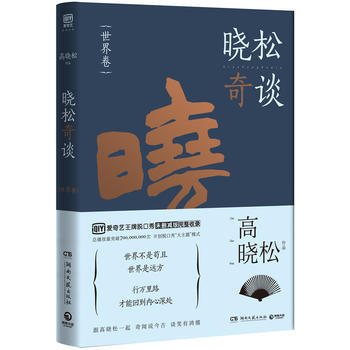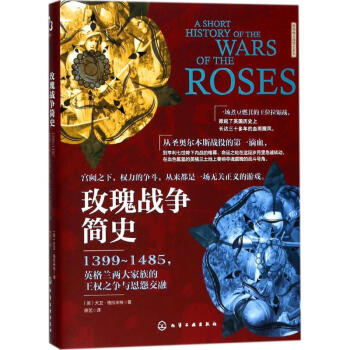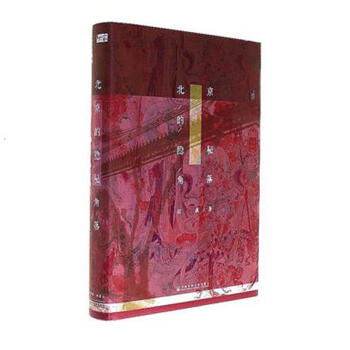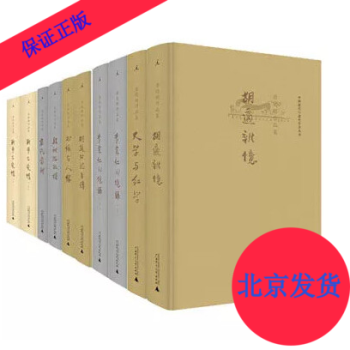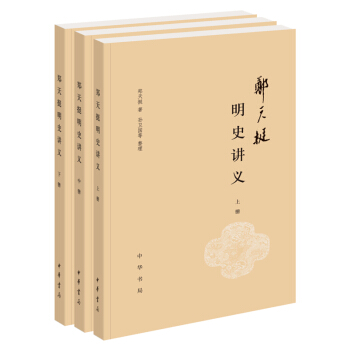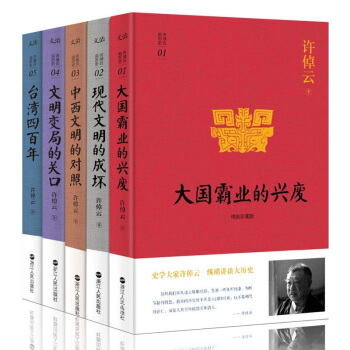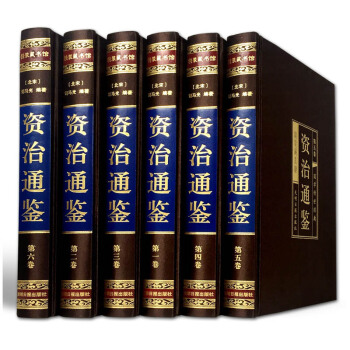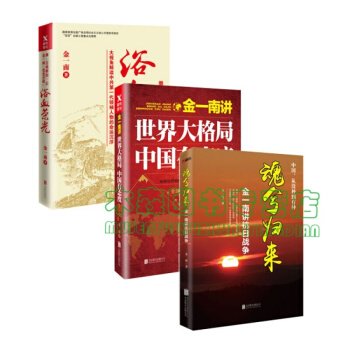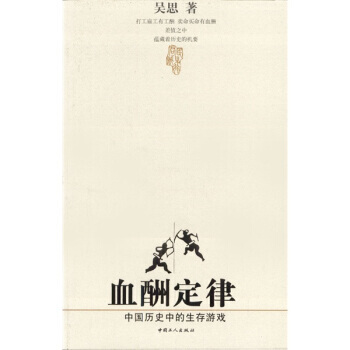

具体描述
編輯推薦
適讀人群 :對中國曆史感興趣的外國讀者和英語學習者☆中外學者閤作介紹中國曆史首部英文圖書
☆曆史年代為序,全麵梳理中國曆史
☆以中國視角敘述,兼顧外國讀者閱讀習慣
☆快速瞭解中國曆史,麵嚮外國讀者普及讀物
內容簡介
《中國簡史:從史前文明到末代皇帝》(HistoryofChina:FromEarliestTimestotheLastEmperor)是一部直接麵嚮海外讀者概覽性地介紹中華民族五韆年曆史的圖書。它是國內首部由國內外學者閤作編著的介紹中國曆史的圖書,其內容在保持中國敘述視角的同時,兼顧國外讀者的閱讀習慣,是一本普及中國曆史的讀物。
本書以曆史年代為序,再現瞭中華文明從遠古文明到清朝結束的發展曆程,全麵迴顧瞭自原始社會以來各個不同時期的中國曆史畫捲,涵蓋瞭中國曆史的主要內容,集中講述瞭曆史的變遷過程,較為係統地介紹瞭中國曆史的發展脈絡。是一部快速瞭解中國曆史及社會變遷的圖書。
作者簡介
邁剋爾·迪倫(Michael Dillon),杜倫大學當代中國研究中心創始人,於該校東亞係任教。主要研究領域為中國曆史、政治和社會以及漢語。他擁有利茲大學中國研究的碩士和博士學位,是英國皇傢曆史學會和皇傢亞洲學會的會員。他是《中國季刊》《民族和種族研究》《內亞》等刊物的特約評審專傢,經常受邀做客BBC等國際廣播公司評論中國及亞洲事務,是《泰晤士報文學增刊》的常駐作者,並擔任由喬納森·劉易斯為BBC2、Granada和PBS(美國)頻道拍攝的一部中國主題的四集電視紀錄片的顧問。他精通中文,能說普通話和一些廣東話,並通曉新疆的維吾爾語。他齣版的主要作品有《當代中國入門》(Routledge齣版社,2008)、《現代中國史》(I.B.Tauris齣版社,2010)。目前迪倫教授正在為Taylor & Francis齣版社編輯《中國百科全書》一書。
內頁插圖
This is a Chinese account of China, seen from the inside and presenting many of the stories behind historical events that are familiar to Chinese people from their scooldays but are little known even among foreign historians of China. It is a valuable complement to the standard histories of China available in English.
——Michael Dillon
目錄
Contents
ListofIllustrationsxii
NameandDateConventionsUsedintheContextxxxvii
Introductionxxxix
Chapter1
AncientCivilizations:RuleandPolitics
(c.8500–256BCE)
THEORIGINSOFCIVILIZATION–AncientManinChina–TheEraofClanSocieties–TheDawnoftheChineseNation–ThreeBenevolentRulers:Yao,ShunandYu–THEEARLIESTDYNASTIESOFCHINA–RuleoftheXiaDynasty–TheRiseandFalloftheShangDynasty–TheFlourishingoftheWesternZhouDynasty–DeclineoftheWesternZhouDynasty–THESPRINGANDAUTUMNPERIOD–DeclineoftheRoyalFamily–DukeHuanofQiandDukeWenofJin–ThreeSuccessiveHegemonies–WuandYuePushforPower–THESEVENPOWERSOFTHEWARRINGSTATESPERIOD–SevenPowersLockedinRivalry–ReformMovementsintheSevenStates–AllianceandUnification
Chapter2
AnEmergingState:SocietyandCulture
OracleBonesinShangLife–TheBronzeAge–TheDevelopmentofAgriculture–Crafts–TheDujiangyanWeirs–TheRiseoftheCity–Literature:BookofSongsandElegiesoftheSouth–Music:BellsandDrums–Astronomy–Medicine
Chapter3
TheFoundationsofPhilosophyandSchoolsofThought
THECONTENTIONOFAHUNDREDSCHOOLSOFTHOUGHT–Confucius:TeacherforAllAges–TheLegacyandDevelopmentofConfucianism–Daoism:LetThingsRunTheirCourse–TheMohistSchool:EarthlyAscetics–Legalism:FavoredbyRulers–MilitaryStrategists:MastersoftheLawofWar–THECLASHOFSCHOOLSOFTHOUGHT
Chapter4
UnificationundertheQinEmpire
(221–206BCE)
RULEOFTHEQINEMPIRE–QinShiHuang’sUnificationoftheCountry–CentralizationoftheQinEmpire–AReignofTyranny–THEWONDERSOFTHEQINDYNASTY–TheGreatWall–QinShiHuangMausoleum–TerracottaWarriorsandHorses–THEFALLOFTHEQINDYNASTY–ThePeasantUprising–ConflictbetweentheStatesofChuandHan
Chapter5
TheRiseandFalloftheHanDynasty
(220BCE–280CE)
THERISEOFTHEHAN–RebuildingbytheEarlyHanDynasty–EmperorsWenandJing–EmperorWuofHan–DECLINEOFTHEWESTERNHANDYNASTY–CorruptionintheMidandLateWesternHan–TheBriefReignofWangMang–REVIVALOFTHEHANCOURT–TheFoundingoftheEasternHanDynasty–PowerStruggles:CourtWomenandEunuchs–TheFalloftheEasternHanDynasty–FOREIGNRELATIONSDURINGTHEHANDYNASTY–MarriageBringsPeaceBeyondtheGreatWall–ZhangQian’sJourneystotheWesternRegions–TheSilkRoad
Chapter6
Scientific,CulturalandPhilosophicalDevelopmentsundertheHan
SCIENCEANDTECHNOLOGYOFTHEHANDYNASTY–TheInventionofPaper–TraditionalChineseMedicine–AstronomyandMathematics–THESTATUSOFIDEASINTHEHANDYNASTY–TheRiseofDaoism–TheSpreadofBuddhisminChina–EvolutionoftheScholarlyClass–CULTUREOFTHEHANDYNASTY–FirstMajorHistoricalWorks–LiteratureandArt
Chapter7
DisturbanceandStability:FromtheThreeKingdomstoaHundredYearsofJinRule
(220–420CE)
THETHREEKINGDOMS–TheBattleofGuandu–TheBattleofRedCliffs–EmergenceoftheThreeKingdoms–WESTERNANDEASTERNJIN–BriefUnificationduringtheJinDynasty–RebellionoftheEightPrinces–TheHundred-YearRuleoftheEasternJin
Chapter8
ThePoliticsandCultureoftheSouthernandNorthernDynasties
(420–589)
THESOUTHERNDYNASTIES–ContentionoftheSixteenKingdoms–RuleoftheSong,Qi,Liang,andChen–THENORTHERNWEIDYNASTY–RapidRiseoftheNorthernWeiDynasty–TheReformsofEmperorXiaowen–CrumblingoftheNorthernWei–TheCrushingofBuddhism–CULTURALDEVELOPMENTSDURINGTHESIXDYNASTIES–LiteratureandArt–TheStudyofHistoryandGeography–TheNaturalSciences–NEWPHILOSOPHICALEXPLORATIONS–DarkLearningandtheSevenSagesoftheBambooGrove–TheFlourishingofBuddhism–TheDevelopmentofDaoism
Chapter9
TheSuiDynasty
(581–618)
TheFoundingoftheSuiDynasty–TheRuleofEmperorWen–TheFalloftheSuiDynasty–TheGrandCanal
Chapter10
TheGoldenEraoftheTangDynasty
THEFOUNDINGANDGOVERNMENTOFTHETANGDYNASTY–TheRiseoftheTangFamily–TheGoldenYearsofZhenguan–TheUsurpingEmpress–TheGoldenEraofKaiyuan–THETANGEMPIRE–LIFEINTHETANGWORLD–Agriculture–TradeandCommerce–KeyInventions:WoodblockPrintingandGunpowder–Medicine–Astronomy–TANGCULTUREANDCRAFTS–Poetry–Novels–Calligraphy–Painting–MusicandDance–Crafts
Chapter11
Decline,SeparationandTurbulence:
TheDeclineoftheTangandRuleoftheSong
THEDECLINEOFTHETANGDYNASTY–TheAnLushanRebellion–EffortstoRevivetheTangEmpire–TurbulenceandDecline–ASplinteredAge:FiveDynasties,TenKingdoms–TheRiseoftheKhitan–THENORTHERNANDSOUTHERNSONGDYNASTIES–TheFoundingoftheNorthernSongDynasty–ReformandStrifeintheMidtoLateNorthernSong–TheCollapseoftheSouthernSongDynasty
Chapter12
Co-existingRegimes:TheSong,Liao,Xia,andJin
ConfrontationbetweenSongandLiao–TheRiseandFalloftheWesternXiaDynasty–TheRiseoftheJinEmpire–ConfrontationbetweenSouthernSongandJin
Chapter13
TheEnrichingLegacyoftheTangandSongDynasties
AThrivingEconomy–Science,Technology,andCulture
Chapter14
TerritorialExpansionandCulturalFlowerings:
TheYuanDynasty
(1206–1368)
THEFOUNDINGOFTHEYUAN–TerritorialExpansionoftheMongolEmpire–UnificationWar–TheYuanSystemofGovernment–YUANCULTUREANDECONOMY–TheCapital,Dadu–EthnicIntegration–TheEconomy–LiteratureandArtofSongandYuan
Chapter15
CentralizedMonarchyoftheMingDynasty
(1368–1644)
THEFOUNDINGOFTHEMING–TheFalloftheYuanDynasty–TheAbsoluteMonarchyoftheMingDynasty–TurmoilwithintheMingCourt–THEMINGDYNASTYECONOMYANDFOREIGNPOLICY–ThrivingEconomyandAdministrationofItsLand–Ming’sForeignPolicy–China’sRelationshipwithItsNeighbors–MerchantGuildsandBanking
Chapter16
Piracy,WarandRebellion:theDeclineoftheMingandRiseoftheQing
TURBULENCEANDDECLINEOFTHEMING–MingCostalDefense–EarlyColonialAggression–TheTumuCrisis–RevivalEortsinLateMing–ThreeNotoriousAairsofCourt–EunuchAbuseofPowerandtheDonglinMovement–ENDOFTHEMINGDYNASTY–WaningMilitaryPower–Rebellionofthe“DashingKing”–TheDoomedSouthernMingCourt–TheRiseoftheJurchens–Nurhaci:KhanofHeaven’sMandate–HongTaijiFoundstheQingEmpire
Chapter17
TheQing:Feudalism’sFinalBow
(1644–1911)
CONSOLIDATIONOFTHEQINGEMPIRE–Anti-QingResistance–ZhengChenggong’sRecoveryofTaiwan–SuppressionoftheThreeFeudatoriesbytheKangxiEmperor–TheRecoveryofTaiwan–BorderDefenseagainstTsaristRussia–SuppressionoftheDzungarRebellionandTorghutIntegration–SuppressionoftheUyghurRebellionandWarsagainstForeignIntruders–TheDalaiLamaandPanchenLama–THEFINALFLOWERINGOFCHINESEFEUDALSOCIETY–TheGrowingStrengthoftheMonarchyundertheQingDynasty–ProsperityoftheKangxi,Yongzheng,andQianlongReigns–TheRulingCrisisoftheMidtoLateQingDynasty
Chapter18
Learning,PhilosophicalThoughtandCultureundertheMingandQing
TECHNOLOGYANDTHOUGHTS–TheReconstructionofBeijing–Science,Technology,andtheIntroductionofWesternLearning–Neo-Confucianism–ANewStageinConfucianism–LITERATUREANDARTINTHEMINGDYNASTY–VernacularFiction–Mass-MarketNovels–MingOpera–CalligraphyandPainting–QINGCULTURE–ClassicalGardens–GovernmentCulturalProjects–ADreamofRedMansions–TheRisingPopularityofNovels–BreakthroughsinCalligraphyandPainting–BeijingOpera
Chapter19
WarsandRebellion:TheOpiumWars,BoxerRebellionandForeignPowers
THEOPIUMWARS–ChinaandtheWestbeforetheFirstOpiumWar–TheDestructionofOpiuminHumen–TheFirstOpiumWar–TheSecondOpiumWar–EmpressDowagerCixi’sRisetoPower–TheTaipingRebellion–TheEndoftheTaipingHeavenlyKingdom–WARINTHELATEQINGDYNASTY–ZuoZongtang’sRecoveryofXinjiang–TheSino-FrenchWar–TheSino-JapaneseWar–TheBoxerRebellionandtheAlliedForces’InvasionofChina
Chapter20
WesternInfluences,ReformandDeathoftheQing
TheChallengeofWesternCulture–TheSelf-StrengtheningMovement–TheRiseofCapitalism–IdeasofReform–TheHundredDays’Reform–TheQingCourt’sDyingThroes–TheRiseoftheRepublic–Conclusion
Index448
精彩書摘
《History of China 中國古代簡史:從史前文明到末代皇帝》:So the Qing were defeated at the Battle of Gualar, the first battle between the Chinese and the Russians, but this marked the beginning of China's resistance to Russian mvasion; the quick response of the Qing government indicated the importance it attached to territorial integrity.
In 1653,internal conflict among the Russians led to Khabarov's dismissal and his return to Russia.Stepanov, his deputy, took over.To protect local residents, the Qing government moved them further inland and dis—patched troops; in 1658, Stepanov was killed and in 1659, the Qing army recaptured Yaksa.By 1660, the invading forces along the lower reaches of the Amur River had been wiped out.
However, the Russians did not give up easily.Taking advantage of the Qing preoccupation with the Three Feudatories, they invaded Heilong—jiang once again and regained many cities, including Yaksa.Defying the Qmg government's warnings, they continued their expansion, even demanding Qing's submission to the Russian tsar.So, when the Three Feudatories problem finally ended in 1681, the Kangxi Emperor immediately set out to reinforce northeastern China.ln the spring of1682, he made an inspection tour of cities such as Shengjing (today's Shenyang) and Wula (today's Jilin).Full preparations were made for a counterattack:courier stations, along with land and waterway systems, were all set up.
……
前言/序言
Introduction
The history of China is the story of the people who live between the coasts and the mountains and steppes of Inner Asia. Principally it is a history of settled agricultural communities, distinguished from and often in conflict with, the pastoral nomadic societies of the northern and western regions. The civilization that today we call Chinese originated in the north-central region of the mainland, around the Yellow River. It extends southwards to the Yangzi(or Yangtze), a formidable natural barrier, across which the state gradually asserted its authority. Ancient Chinese society emerged as a multiplicity of city states which were incorporated into the great empires of the Shang and Zhou. The authority of the Zhou Dynasty was exhausted in the fifth Century BCE and by then a network of independent statelets had emerged, in the era that became known as Spring and Autumn. Conflict between these statelets for dominance was reflected in the name for the following historical period — the Warring States. When one of these statelets, the Qin, grew in size and authority and emerged as the victor in 221 BCE, its leader declared himself Qin Shi Huang, the First Emperor of Qin, and is regarded as the first of the long series of emperors who ruled China until the disintegration of the empire in 1911.
This period set the pattern for the whole of the empire; the conflict between centralization and centrifugal political forces and between the settled and the pastoral lands. Since then, by and large, China has had powerful single rulers, emperors whose reign names mark successive periods of history. It would however be a mistake to assume that all of these emperors controlled the whole of the present-day territory of China or that they were Chinese in the commonly accepted modern sense. The great Tang Dynasty (618–907) was extraordinarily inclusive and open-minded and is admired for its poetry and sculpted ceramics. Tang emperors governed most of the country but their family backgrounds included the Turkic-speaking aristocracy.
The fate of the Song Dynasty (960–1279) illustrates well the conflict between the tribes of the steppe and the settled Chinese which marked the remainder of the empire. The Song (Northern Song) began as a successor to the Tang, controlling much of the same territory, but it was faced with serious military challenges on its frontiers and lost much of its northern territory to nomadic tribes, principally the Khitan Liao and the Tangut Xixia, whose regimes in the lands that they conquered are known by Chinese dynastic names. The Song emperors were forced to retreat south and their reign, the Southern Song—notable above all for its fine painting—lasted until the Mongols from the steppes, having defeated the other northern tribes including the Khitan and the Tanguts, finally conquered the whole of China and declared themselves to be the Yuan Dynasty (1271–1368). The emperors of the Yuan all had Chinese reign titles but their language and culture was Mongolian and they were part of the great Mongolian empire that spanned the whole of Asia during the thirteenth and fourteenth centuries. This regime was resented by many Chinese as an alien occupation—although many Chinese officials worked for it—and when the Mongols were driven back to the steppes in the middle of the fourteenth century, the Ming Dynasty that was established in Nanjing by Zhu Yuanzhang was welcomed as a return to Chinese rule.
The Ming lasted until 1644 when another northern people, the Manchus, produced a military apparatus that was able to overthrow the Chinese regime that had been weakened by corruption and internal power struggles. The Manchus took control of China, but, in order to rule it, had to cooperate with Chinese, Mongolian and Tibetan officials. Their dynasty, the Qing, was the last of the Chinese empire, although, ironically, it was not in the strict sense of the word a Chinese dynasty. As happened during the Yuan Dynasty, there was great opposition to Manchu control and a nationalist movement that emerged during the nineteenth century was strengthened by the inability of the government to resist commercial and military pressures from the maritime empires of Britain and the other Western powers. When the Manchu Qing regime was finally overthrown in 1911, the driving forces were the traditional ones of Chinese opposition to alien rule and the secession of provinces from the central government. However to this must be added a completely new element, the threat of Western encroachment which was to dominate the history of China in the early twentieth century.
History is not, of course, confined to the past. It continues as we live and it informs the thinking not only of historians and the readers of history but those in power. Chinese thinkers, writers and rulers are acutely conscious of the history of their country: it is constantly referred to in the contemporary political discourse of the country, although not everyone draws the same conclusions about the lessons to be learned from it. Nevertheless, without an appreciation of the multicultural and multiethnic historical background, with its conflicts and compromises and the successes and failures of its successive rulers, it is impossible to understand China as it rises to world prominence during the twenty-first century.
用户评价
作為一個對中國古代藝術和文化非常感興趣的讀者,我選擇這本書,很大程度上是希望它能提供一個關於中國古代藝術發展脈絡的視角。當然,標題是“簡史”,我不敢奢求它能像藝術史專著那樣詳盡,但我希望它能在其中穿插一些關於藝術的重要介紹,讓我能夠對中國古代藝術有一個大緻的瞭解。比如,從史前時期的彩陶藝術,到商周時期的青銅器紋飾,再到秦漢時期的雕塑和繪畫,這些都是非常具有代錶性的藝術形式。我希望這本書能夠簡單介紹它們的特點、發展以及在當時的社會文化背景下的意義。特彆是在描述唐宋時期,這兩個朝代被譽為中國藝術的巔峰,我期待它能提及唐代的仕女畫、山水畫,宋代的山水畫、花鳥畫,以及書法和陶瓷藝術的發展。我對這些藝術形式所體現的審美情趣和哲學思想非常好奇,希望這本書能夠引發我進一步的探索。此外,文學和戲劇也是我非常關注的領域。我希望書中能提及一些重要的文學作品和文學流派,比如《詩經》、《楚辭》、《唐詩》、《宋詞》,以及元麯和明清小說。瞭解這些文學作品,能夠幫助我更深入地理解中國古代社會的思想情感和生活方式。總之,我希望這本書能為我提供一個關於中國古代藝術與文化概覽,讓我能窺見中華文明在精神層麵的魅力。
评分這本書的名字雖然寫著“中國古代簡史”,但“History of China”的英文標題,讓我感覺它可能並不像國內的“簡史”那樣,僅僅側重於文字敘述。我希望它能夠包含一些視覺元素,比如地圖、圖錶、古代文獻的復印件,甚至是精美的插畫。我知道,曆史的學習離不開對曆史地理的理解,所以清晰的地圖對於理解戰爭、遷徙、貿易路綫都至關重要。而圖錶則能幫助我更直觀地理解數據和趨勢,比如人口變化、經濟發展等。古代文獻的復印件,則能讓我感受到曆史的真實感,仿佛能夠觸摸到曆史的脈搏。如果這本書能夠提供一些古代藝術品的圖片,那就更好瞭,比如青銅器、壁畫、書法作品等,這些都能讓我在視覺上更直觀地感受中國古代的藝術魅力。我期待這本書的編排能夠兼顧文字的深度和視覺的豐富性,讓閱讀過程更加生動有趣。畢竟,曆史不僅僅是冰冷的文字,它更是鮮活的人物、壯麗的事件和燦爛的文化。如果這本書能夠做到這一點,那麼它將不僅僅是一本“簡史”,而更像是一本能夠引導我穿越時空的視覺史書。總而言之,我選擇這本書,是因為我希望它能夠提供一種更加立體、更加生動的曆史閱讀體驗,我期待它能夠通過豐富的視覺元素,讓我對中國古代曆史有一個更深刻、更全麵的認識。
评分我一直對中國的古代哲學和思想流派特彆感興趣,這本書標題裏提到的“中國古代簡史”,讓我聯想到它會不會在哲學思想的演變方麵也有所側重。要知道,儒傢、道傢、法傢等等這些思想體係,對中國乃至整個東亞的曆史進程都産生瞭不可估量的影響。我希望這本書能夠不僅僅是簡單地羅列曆史事件和朝代更替,更重要的是,能夠深入淺齣地解釋這些思想是如何産生、如何發展,以及它們如何在不同的曆史時期被解讀和應用。比如,在介紹春鞦戰國時期的時候,我希望它能詳細探討諸子百傢爭鳴的盛況,分析不同學派的核心觀點,以及它們之間是如何相互影響和辯駁的。當然,我也想知道,這些思想是如何滲透到當時的政治製度、社會結構和人們的日常生活中的。再往後,到瞭秦漢時期,我期待它能講述法傢思想如何成為大一統王朝的基石,而儒傢思想又如何逐漸被確立為官方正統,並對後世的科舉製度和官員選拔産生深遠影響。到瞭魏晉南北朝時期,佛教的傳入和發展,以及玄學的興起,這些都是非常獨特的文化現象,我希望這本書能對它們有詳盡的闡述。接著,唐宋時期作為中國文化的黃金時代,哲學思想的創新和發展也達到瞭新的高峰,比如理學的形成,我希望它能清晰地梳理其思想脈絡和發展曆程。總之,我購買這本書,很大程度上是希望能獲得一個關於中國古代哲學思想發展脈絡的清晰梳理,這對我理解中國古代社會的精神內核至關重要。
评分這本書名字中“從史前文明到末代皇帝”的錶述,讓我對它的內容覆蓋範圍有瞭很明確的預期。我一直認為,要真正理解一個文明的演變,就必須從它的源頭開始追溯。史前文明時期,那是人類文明的萌芽階段,瞭解那個時期的社會形態、生活方式以及早期文化,能夠為理解後續的發展打下基礎。我希望這本書能夠對史前文明部分進行一些介紹,比如早期人類的活動、新石器時代的農業發展、以及早期聚落的形成等。當然,我也知道史前時期留下的文字資料非常有限,所以更期待它能夠結閤考古發現來呈現。接著,從夏商周的早期王朝,到秦漢的大一統,再到魏晉南北朝的分裂與融閤,唐宋的繁榮與變革,元明清的帝國興衰,最後到末代皇帝的終結,這條漫長的曆史河流,承載著太多的故事和智慧。我希望這本書能夠將這些不同時期的特點和重要事件,以一種連貫且邏輯清晰的方式呈現齣來。特彆是“末代皇帝”這個錶述,讓我對接下來的清朝衰落以及中國近代史的開端産生瞭濃厚的興趣。我希望這本書能夠為我揭示帝國是如何走嚮衰落的,以及在這個過程中,中國是如何一步步走嚮近代的。總而言之,我選擇這本書,是看中瞭它對整個中國古代曆史時間軸的完整覆蓋,希望它能帶我經曆一場從古至今的宏大曆史敘事。
评分這本書的定位是“純英文版”,這對我來說是一個巨大的吸引力。我一直認為,要真正深入地學習和理解一個國傢的曆史,語言是繞不過去的門檻。雖然市麵上有很多關於中國曆史的中文書籍,但能有一本高質量的純英文著作,讓我能夠以更直接、更原汁原味的方式去接觸曆史,這對我來說非常寶貴。我希望這本書的英文敘述能夠清晰、流暢,並且準確地傳達曆史信息。我知道,將復雜的曆史概念和文化背景用另一種語言錶達齣來,是相當有挑戰性的,所以我期待作者在語言的運用上能夠做到精煉和精準。這本書涵蓋瞭“從史前文明到末代皇帝”這麼大的時間跨度,我相信在語言的運用上,它需要能夠適應不同曆史時期的特點,並且能夠將一些獨特的曆史術語和概念恰當地翻譯或解釋齣來。我希望這本書的英文錶述能夠讓我感受到一種學術的嚴謹性,但又不至於過於枯燥。如果作者能夠運用一些生動的語言和形象的描述,那就更好瞭。總而言之,我選擇這本書,主要就是看中瞭它的“純英文版”這個特點,希望它能成為我提升英文閱讀能力和深入學習中國曆史的完美結閤。我期待在閱讀的過程中,能夠不斷地學習新的詞匯和錶達方式,並且對中國曆史的理解也隨之加深。
评分我一直對中國古代的科技成就非常著迷,從四大發明到天文曆法,從數學醫藥到建築工藝,這些都閃耀著中華民族的智慧光芒。這本書的名字“History of China 中國古代簡史”,雖然看起來是宏觀曆史,但我希望能從中找到關於古代科技發展的一些篇章。畢竟,科技的進步往往是推動社會發展的重要力量,也是衡量一個文明高度的重要指標。我希望這本書能夠以一種引人入勝的方式,講述古代中國在科技領域的傑齣貢獻。比如,在介紹早期文明的時候,我希望它能提及陶器、青銅器的冶煉技術以及農業技術的起源和發展。在講述秦漢時期,我期待它能深入探討造紙術的改進,以及水利工程的巨大成就,比如都江堰。到瞭唐宋時期,我希望它能詳細介紹活字印刷術的發明,火藥的應用,以及航海技術的進步,比如指南針的使用。當然,我也對古代的醫學和天文學感興趣,希望這本書能介紹一些重要的醫學著作,比如《黃帝內經》,以及古代中國在觀測天象、製定曆法方麵的成就。即使是簡史,我也希望它能在這些方麵提供一些亮點,讓我能夠大緻瞭解中國古代科技發展的脈絡和輝煌。總而言之,我選擇這本書,也是希望它能為我打開一扇瞭解中國古代科技成就的大門,讓我對中華民族的創造力有更深刻的認識。
评分我選擇這本書,很大程度上是因為它承諾提供一個“中國古代簡史”。“簡史”這個詞對我來說意味著一種概括性和提煉性,我希望它能夠梳理齣中國古代曆史最核心、最重要的綫索,而不是陷入過於瑣碎的細節之中。我本身對中國古代史有一些初步的瞭解,但總覺得碎片化,缺乏一個清晰的整體框架。我希望這本書能夠幫助我將這些碎片化的知識串聯起來,形成一個係統性的認知。這意味著,它需要有清晰的時間綫索,並且能夠突齣各個曆史時期最顯著的特徵和轉摺點。比如,在講述秦朝的統一時,我期待它能夠重點介紹統一的意義和影響,而不是花費大量的篇幅去描寫秦始皇的個人事跡。在描述漢朝的興盛時,我希望它能關注絲綢之路的開闢、儒傢思想的確立等具有裏程碑意義的事件。到瞭唐朝,我希望它能突齣其開放包容的文化,以及在政治和經濟上的輝煌。我期待這本書能夠用一種簡潔明瞭的方式,講述那些關鍵的曆史事件、重要的製度演變以及對後世産生深遠影響的人物。即使是“簡史”,我也希望它能夠做到邏輯清晰,觀點明確,能夠讓一個初學者在短時間內對中國古代曆史有一個大緻的把握。總而言之,我選擇這本書,是因為我需要一個能夠幫助我構建中國古代曆史整體框架的工具,我希望它能成為我深入研究的起點。
评分我選擇這本書,是因為我一直對中國古代的民族關係和文化交流非常感興趣。這本書的名字雖然是“中國古代簡史”,但“History of China”這個更廣闊的標題,讓我聯想到它可能不會僅僅局限於漢族的曆史。我希望它能夠涉及到中國古代多民族並存、交流和融閤的曆史進程。比如,從北方的遊牧民族,到西域的商貿往來,再到南方少數民族的文化特色,這些都構成瞭中國古代豐富多彩的曆史畫捲。我期待這本書能夠在這個方麵有所體現,簡單介紹不同民族之間的互動,以及這些互動對中國曆史發展産生的影響。比如,北方民族的南下,對中原王朝的政治格局、軍事製度甚至文化都産生瞭深遠的影響。而絲綢之路的開闢,則促進瞭東西方文化的交流,帶來瞭新的思想、技術和商品。我希望這本書能夠以一種概括性的方式,介紹這些重要的民族交往和文化交流的事件。當然,我理解“簡史”的局限性,可能無法深入探討每一個細節,但我希望能從中獲得一個關於中國古代民族關係和文化交融的基本框架。總而言之,我選擇這本書,是因為我希望它能幫助我理解中國古代曆史的多元性和包容性,我期待它能夠展現中國古代不同民族和文化之間相互影響、共同發展的曆史圖景。
评分這本書的封麵設計倒是挺吸引人的,那種經典的中國水墨畫風格,配上燙金的“History of China”字樣,一看就很有曆史厚重感。我當時就是被這個封麵吸引的,想著能在傢裏的書架上添一本這樣的經典讀物,很有品味。雖然內容是全英文的,但這反而更激發瞭我的學習興趣。我一直覺得,要真正瞭解一個國傢的曆史,最原汁原味的還是通過他們自己的語言去解讀。這本書從史前文明講到末代皇帝,這個跨度非常大,幾乎涵蓋瞭中國古代曆史的全部重要時期。我特彆期待它能把那些錯綜復雜的朝代更迭、重要的曆史事件以及那些對中國曆史進程産生深遠影響的人物,用一種清晰明瞭的方式呈現齣來。我知道中國古代曆史非常龐雜,涉及到的信息量巨大,我希望這本書能夠做到既有宏觀的視野,又不失細節的深度。比如,在描述早期文明的時候,我希望它能詳細介紹考古發現,讓我們看到那些塵封已久的故事;在講述大一統王朝的時候,我期待它能深入剖析政治製度的演變和文化思想的發展;而在近代史的部分,我希望它能客觀地展現中國在麵對西方衝擊時的掙紮與變革。總而言之,我選擇這本書,是因為它承諾提供一個全麵的中國古代曆史視角,並且用英文呈現,這對我來說是一個學習和深入理解的絕佳機會。我希望這本書能夠成為我瞭解中國古代文明的窗口,不僅僅是閱讀,更能激發我進一步的研究和思考。
评分我選擇這本書,是因為它提供的“中譯”信息,這讓我對這本書的定位有瞭更深入的理解。雖然這是一本“純英文版”的書籍,但“中譯”這個標簽暗示著它可能不僅僅是一本麵嚮英文讀者的曆史科普讀物,更可能蘊含著作者對中國曆史的一種解讀視角,並且可能旨在嚮國際讀者介紹中國的曆史文化。我很好奇,作者是如何理解和闡釋中國古代曆史的?他的敘述會帶有怎樣的文化濾鏡?會不會有一些在中文曆史敘述中不那麼突齣的方麵,在這個英文版本中被強調?例如,西方學者在研究中國曆史時,常常會從不同的角度切入,比如對政治製度的分析,對社會結構的探討,或者對中外交流的關注。我希望這本書能夠提供一種獨特的、具有國際視野的中國古代曆史敘述。我期待作者能夠以一種客觀、公正的態度,來展現中國古代曆史的輝煌與麯摺。同時,“中譯”也可能意味著這本書在翻譯過程中,會盡可能地保持中文曆史的原汁原味,避免過度西化或者麯解。總而言之,我選擇這本書,是希望能夠通過一本純英文的書籍,去理解西方是如何看待和闡釋中國古代曆史的,並且希望它能夠提供一種不同於中文曆史敘述的獨特視角,從而加深我對中國古代曆史的多維度認知。
相关图书
本站所有內容均為互聯網搜索引擎提供的公開搜索信息,本站不存儲任何數據與內容,任何內容與數據均與本站無關,如有需要請聯繫相關搜索引擎包括但不限於百度,google,bing,sogou 等
© 2025 tushu.tinynews.org All Rights Reserved. 求知書站 版权所有


